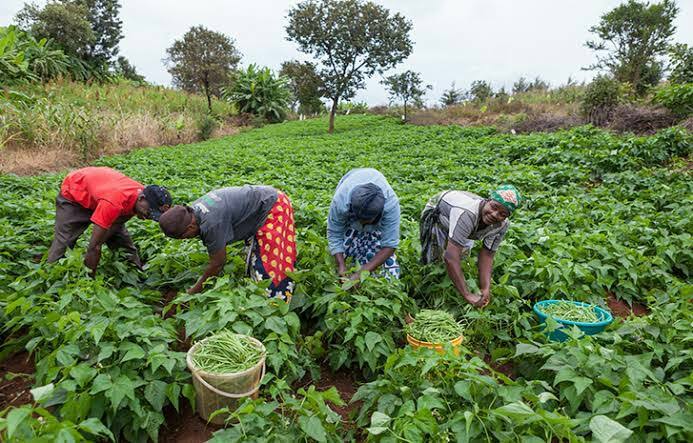
The Lagos State Government disclosed on Tuesday that the agriculture sector contributed N7 trillion to the state’s Gross Domestic Product (GDP), noting that no fewer than 10,000 heads of cattle were slaughtered daily in the state.
The state government also revealed that it was collaborating with other states in the country to ensure that the 200,000 tonnes of paddy required at the Imota Rice Mill were met.
The State Commissioner for Agriculture, Abisola Olusanya, made these disclosures during a ministerial press briefing to mark the second term in office of Governor Babajide Sanwo-Olu’s administration, held at Alausa, Ikeja. She assured that the state government would not relent in terms of improving steady growth.
Olusanya further disclosed that the state government would inaugurate 50 meat vans at the Oko-Oba abbatoirs next week as part of measures to control and preserve meat.
ALSO READ: Court orders release of Babcock student allegedly detained by EFCC over mother’s debt
“In Nigeria, agriculture contributes 25 percent to the GDP. But in Lagos, agriculture encompasses a lot, including food production, so agriculture has contributed N7 trillion to the Lagos economy in the last couple of years.
“This shows that we have potential and opportunities. We will not relent in making it better,” the commissioner said.
“Lagos slaughters not less than 10,000 heads of cattle daily, including those slaughtered in our barracks,” she added.
Speaking about rice production, Olusanya maintained that the state remained the largest consumer of rice in the country, with an estimated consumption of about two million metric tonnes per annum.
The commissioner stated that the mill was part of the government’s commitment to ensuring food security in the state, noting that the mill “is a key component of the T.H.E.M.E.S + Development Agenda of Mr. Governor to make Lagos State a 21st-century economy.”
“Lagos State is the largest consumer of rice in the country, with an estimated consumption of about 2 million metric tonnes per annum.
“The Lagos Rice Mill consists of two lines of 16MTPH integrated mills located on 8.5 hectares of land in Imota. The rice mill has a capacity to produce 2.4 million 50 kg bags of rice yearly using 200,000 metric tonnes of paddy annually.
“The mill is part of the government’s commitment to ensuring food security in the state, which is a key component of the T.H.E.M.E.S + Development Agenda of Mr. Governor to make Lagos State a 21st-century economy,” Olusanya said.
Special Adviser on Agriculture, Dr. Oluwarotimi Fashola, further explained that the state government was in partnership with some states on the supply of paddy because of the demand for the food item in the state.
“Due to the volume of rice needed, Mr. Governor signed an MOU with Niger State, the largest producer of paddy in the country.
“The Imota Rice Mill requires 200,000 tonnes of paddy. The partnership with other states is to ensure the sustainability of production. We extend our hand of fellowship to all the South West states.
“If we have 20 percent of paddy from Lagos, other South West states will provide 40 percent. No single state can provide all. With sufficient paddy, rice production will be sustained. We can’t adopt a stop-and-start approach, as it will be harmful. Our efforts are focused on ensuring paddy production is sustained,” Fashola stated.
“100,000 tonnes of paddy will ensure smooth operation, but currently, we have less than 10 percent,” he added.
Source: